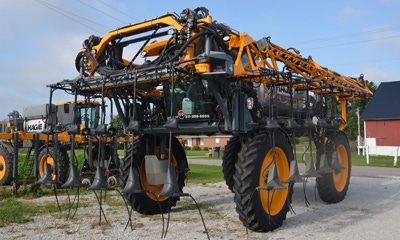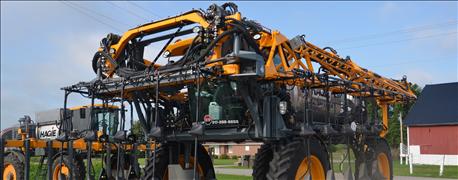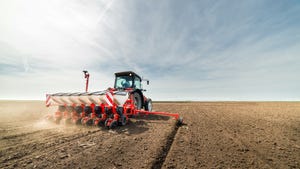
What can your son or daughter expect to earn if they invest in four years of college and pursue a career in agriculture? Maybe they come home to farm, either now or in the future, or maybe they embark on a permanent career off the farm. Either way it’s helpful to know what graduates can expect, based upon salaries obtained by recent graduates.

WHO MAKES MORE? Which person makes more — the custom applicator who drives this, the precision ag specialist who programs it or the agronomist who decides what to apply? Check the infographic for clues.
Each year ag colleges across the country compile information on December and May graduates, and report their career choices and salaries, notes Alan Talbert, an ag education instructor in the Purdue University College of Agriculture. Twenty colleges participated in the 2015-16 study, including Purdue and ag colleges in Illinois, Kentucky, Ohio and Michigan.
The study is coordinated by Iowa State University. The Midwest, Great Plains, Southeast and Southwest are well-represented in the study.
Here are three key findings of the 2015-16 study. Refer to the infographic below for more details.
1. There's a wide range for starting salaries for ag teachers nationwide.
Roger Carr, Clinton Central High School, raised eyebrows when he recently commented that the way to cure the ag teacher shortage is to pay them what they are worth. He floated the idea of paying an ag teacher $100,000 per year if you want a quality program.
While Carr was trying to make a point, he may not be as far off as you'd think. According to the survey, the average starting salary for an ag teacher this year was $40,044. It’s the range that’s surprising. On the low end, someone is teaching for $23,000. On the high end, one school district is paying $58,500 for a first-year ag teacher.
2. Agronomists earn more than ag teachers, but not that much more.
One of the reasons given for the current ag teacher shortage is that other industries are stealing ag ed graduates. There’s no doubt that’s happening, but it’s not reflected dramatically in starting salaries. The average salary for a beginning agronomist was $44,382 — just over $4,000 more than for an ag teacher. The range reported is narrower, going from $32,800 to $60,000. Fourteen people in the survey were hired by farming operations, at an average salary of $47,954.
3. Forestry and wildlife careers aren’t where the money is.
Despite being popular career goals for kids who like the outdoors, if your goal is to make money, forestry and wildlife career paths might not be your best choice, according to the survey. The average starting salary for a wildlife biologist, technician or researcher was $28,971. The range was $18,720 to $50,000 per year.

About the Author(s)
You May Also Like




